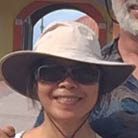ANCHOR FEE SCAM ALERT
ANCHOR FEE SCAM ALERT

SV MAISON DE SANTE reports:
Please learn from our mistake- For those going to Isla Escudo de Veraguas in the Bocas Del Toro region, Panama. Recently, we were approached by locals who insisted on payment of $15 for anchoring. They did not look official but had official looking receipts (like you would get in San Blas Islands). We never paid anything last year and paid this time thinking there might have been a change we were unaware of. Later (we) spoke to another local on the island who said, "do not pay her". We never paid anything last year and in reaching out to the local Bocas Del Toro cruisers on WhatsApp, seems like this just started this year and some are falling for the trap.
My experience has been that most people in remote areas looking for a handout are happy with Colas and other basic supplies (school supplies, disposable batteries, some gas, or lures). We are happy to contribute but also it’s unfair to cruisers for people to falsely claim rules/regulations when they are not a governing authority.
I did get a receipt and have paid WAY more for a piece of paper! 😂
COOKIES AND FARADAY CAGES
COOKIES AND FARADAY CAGES
*Seasonal Provisioning Tip*
This time of year you can get huge packages of food (cookies, chocolates, crackers) in special seasonal ‘cookie tins’. We on SV AVANT go crazy and stock up on them.
We keep the tins to use as faraday cages (store smaller portable electronics in them to protect them from the effects of a nearby lightning strike).
BONUS: Consumption of the contents can improve morale, as well.



SY AVANT 🇨🇦 Rob & Debra – Beneteau 43.5




